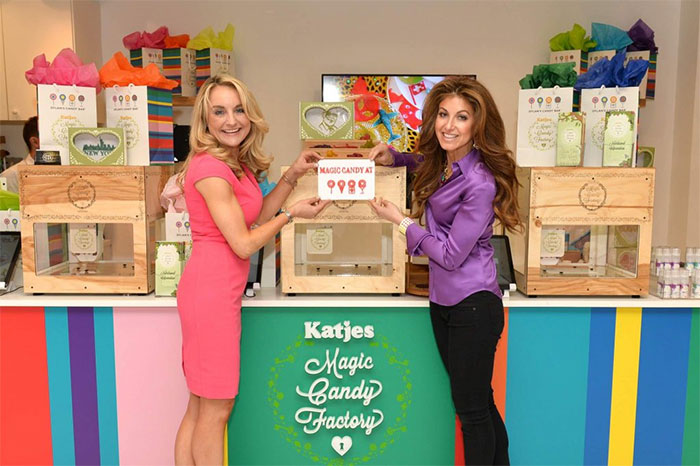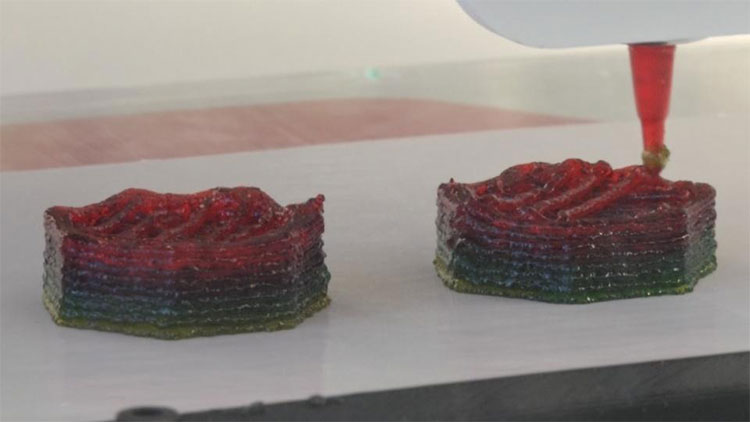Production of functional food according to the application thanks to 3D Printing technology
Nourish3D, a UK-based company has launched a 3D printing device, which can print 7 separate food layers, according to users' needs.
Not only can food be created by 3D printing technology, now users can also produce functional foods using this advanced technology. A UK-based company recently released a 3D printing device, which supports the creation of complementary food, depending on the user's needs.
Print additional food according to user needs
Nourish3D, based in Birmingham, England, unveiled a 3D functional food printing device in front of a crowd of 'London Food Technology Week' events, taking place in the British capital from May 25-27.
Customers will answer the online survey around their lifestyle and diet, so that the company determines what vitamins and ingredients they need. Customers can also choose materials from a list of available offers.
Melissa Snover - Nourish3D CEO told Reuters: ' If you are a vegetarian, you may be deficient in iron or vitamin D. If you regularly run long distances, you may need nutrients to Joint protection like glucosamine. If you regularly work in front of a computer or watch TV continuously, you will need to add vitamin A to protect your eyes'.

Melissa Snover - CEO of Nourish3D Company (on the left), shared about the products
Functional food is printed with 3D technology.
Nourish3D claims, I am the first company in the world that can print 7 separate food layers to create a complete functional food. The layers are tied together with a vegan adhesive.

7 separate food layers help create a complete functional food.
To create sweetness, Maltitol compound and natural sweetener are used instead of sugar.
This technology has received positive feedback from experienced people. A visitor to the 3D printing product test shared: 'I can't believe there's no line inside this product. The taste is very sweet, very like sugar, but there's absolutely no sugar at all. It is hard to believe that this is a product printed from 3D technology. Very surprising '.
Nourish3D products will officially be offered in the UK in August, and start targeting the giant US functional food business in early 2020.
3D printing will create a big transformation
According to Forbes magazine, thousands of industries, from cars and aerospace to footwear and jewelry industries, have applied 3D technology to create products. The annual intensive study of Wohlers Report estimates that 3D printing will develop into a $ 5.2 billion industry by 2020, up from $ 1.3 billion in 2010.

Building bridges with 3D printing technology.

3D printed pizza made by BeeHex.
Forbes also said that medical experts have anticipated that 3D printing technology will be widely used to produce drugs, replacement parts, or drugs. This technology proved to be very effective when used to produce low-volume but high-performance goods, such as aircraft components or prosthetics, to replace parts of the human body.

3D print fake hands.
Currently, 3D printing technology is still primarily used by large manufacturers to create real machines, such as components in automated factories.
However, many experts say that 3D printing technology will be used to produce consumer products. There are many predictions that, soon, technology-savvy households can buy 3D printers, allowing them to produce whatever they want and the dreams of creators and businesses will come true.
- Israel develops meat products with 3D printing technology
- Magic 3D printing technology
- History of functional foods
- Video: Food printing restaurant with the world's first 3D technology
- NASA makes pizza with 3D printer
- Unbelievable applications of 3D printing technology
- This is a study that the functional food industry doesn't want you to read
- The technology of producing 3D chocolate is extremely poisonous
- 3D printers produce cheese that tastes like a real taste
- Impressed with 3-D nano printers
- The first pharmaceutical to use licensed 3D printing technology in the United States
- Students create functional foods from the first bitter vegetable in Vietnam
 The US company is about to build a supersonic passenger plane of 6,000km / h
The US company is about to build a supersonic passenger plane of 6,000km / h Japan develops avatar robot as in fiction film
Japan develops avatar robot as in fiction film Australia tested the world's first mango picking robot
Australia tested the world's first mango picking robot Finland installs the world's first sand cell system
Finland installs the world's first sand cell system